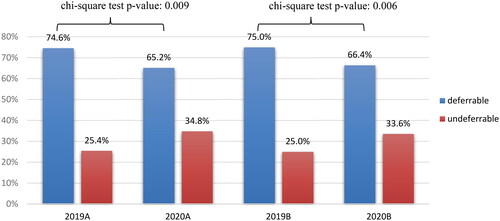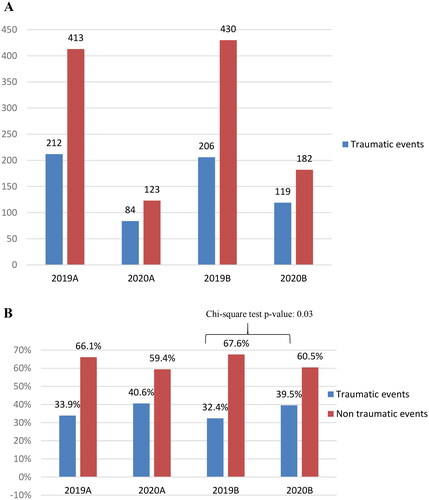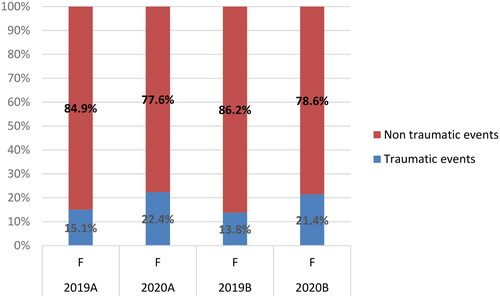Figures & data
Figure 1. Total number of consultations to the ophthalmological emergency department according to the studied period.
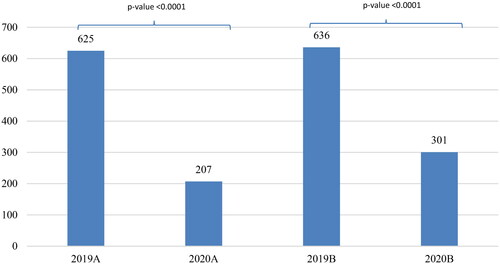
Figure 2. (A) Number of consultations according to age during the study periods. (B) Number of consultations according to sex during the study periods (M: males; F: females).
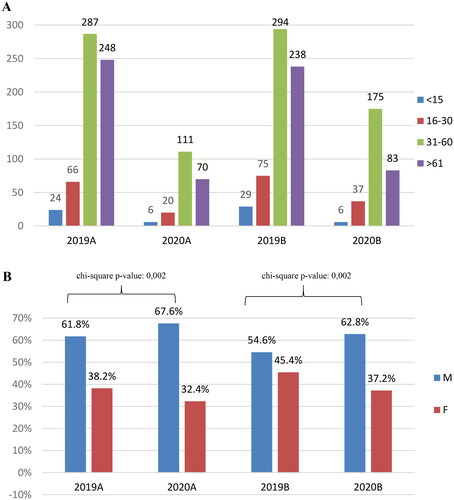
Figure 4. Affected ocular regions upon consultation during the selected periods. The anterior segment was the most involved in all consultations in 2019 (67.33%) and 2020 (68.11%) (p = .75). The proportion of consultations involving the posterior segment significantly increased from 15.20% in 2019A to 21.26% in 2020A, and from 16.19% in 2019B to 18.94% in 2020B (p value = .04, p value = .30, respectively). The proportion of consultations involving the orbit and annexa did not significantly change between 2019 and 2020 (2019A, 9.76% vs. 2020A, 8.21%; 2019B, 12.26% vs. 2020B, 8.97%). The proportion of consultations involving for neuro-ophthalmology decreased from 2.46% in 2019 to 1.77% in 2020 (2019A, 2.56% vs. 2020A, 1.935; 2019B, 2.36% vs. 2020B, 1.66%). The proportion of consultations involving for other ocular regions also decreased from 3.68% in 2019A to 1.45% in 2020A, and from 3.30% in 2019B to 1.66% in 2020B.
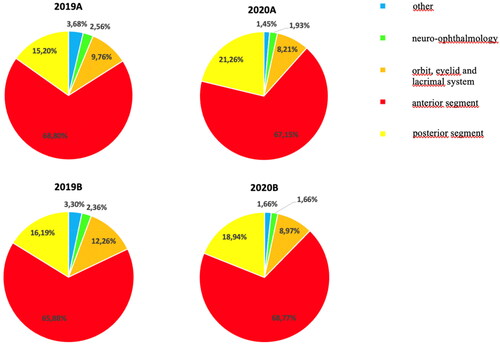
Data availability statement
Data available on request from the authors.

